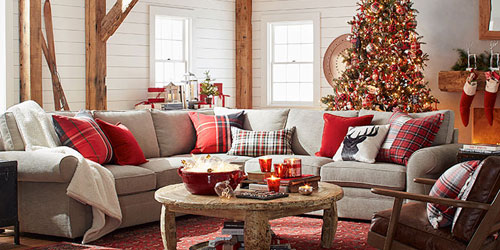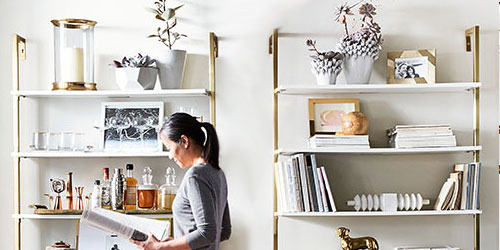How to
Make Beautiful Flower Arrangements
A beautifully arranged vase or bowl of flowers can brighten any room and add a sense of elegance and comfort too. Sticking some flowers in a container with water might not necessarily give you the polished look you’re going for, even if this simple style definitely has its place in many a decor scheme. If you aren’t familiar with basic flower arranging techniques, creating these beautiful floral displays might seem complicated, but you don’t need to be a pro to make a beautiful arrangement and learn some key skills. You can learn all the basics for creating a lively living arrangement from Pottery Barn’s floral designer Nico De Swert.
From barely blushing whites to shocking neon pinks and oranges, flowers offer a wide range of colors for you to enjoy. Bringing these colors together in a coordinated way can help make your arrangement look more professional and thoughtful. Nico starts with an 8" by 12" clear rectangular vase and a collection of purple flowers with accent greenery in the form of tall, thin grasses.
You don’t have to get the exact same flowers as the ones shown here in order to get a similar look. Just focus on selecting a range of flowers that show off different tones of the same color. Notice how the collection of purples he uses includes everything from a pastel lavender tone in the carnations to a deep, dark purple in the calla lilies and even a silvery greenish-blue in the thistle. This selection of flowers shows the full spectrum of purple colors, which is a great way to create a monochromatic arrangement that has a lot of depth and interest. You can do this with any color that flowers come in, from reds and pinks to oranges and yellows, which all look beautiful displayed in a clear vase.
Nico starts the arrangement with an improvised flower frog. In flower arranging, "frog" refers to a tool, usually metallic, that helps keep flowers in place. There are several different styles of frogs you can look into if you want to build a flower-arranging toolkit, but for this project, Nico uses cut stalks of equisetum, also known as snake grass or puzzlegrass, along with blades of bear grass.
The idea with this technique is to create a firm base for your flowers to go into so they stay put. In that sense, the grass is acting as a vase filler for this arrangement. It may seem like you’re filling up your vase quickly, but the flower frog filler actually makes it much easier to hold your blooms in place as you arrange them.
To mimic the look of this arrangement, make sure your filler greenery is long and thin and cut to a length that’s just about an inch or two higher than the top of the vase. Then, cut your flower stems at an angle, making sure that some of them are cut taller than your filler greenery and that your filler greenery only extends an inch or two past the top of your container.
Add your colorful flowers one at a time, focusing on one type of flower at a time. Place like flowers in small groups, but disperse them throughout the vase evenly. Don’t think too much about placement; take a quick look at the arrangement and place a flower where there’s an open space or in an area that could use some of the color you have in your hand. If you have tall, frilly flowers like the thistle in this arrangement, add them first, and then move on to smaller, more compact flowers. If you have any fragile or particularly small flowers, put them in last to keep them protected and make sure the other flowers don’t cover them. When you're finished adding flowers, gently add water with a pitcher to avoid disturbing your arrangement.
With this particular arrangement, there is a front and a back, so focus your efforts on adding flowers to one of the wider sides. That’s because it’s ultimately placed up against a wall on a display table. If you want to place this arrangement on a table where people can look at it from both sides, turn the vase as you add flowers to ensure you have an even distribution at the front and back. Turning the vase is the smartest approach when you have a round container too, unless you’re deliberately creating an arrangement with a front side and a back side.


